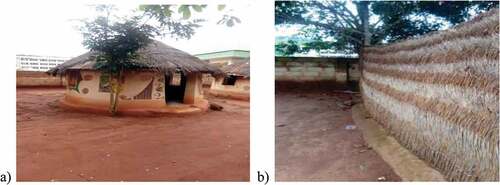Figures & data
Figure 1. Map of southeast region of Nigeria. The states include Abia, Anambra, Ebonyi, Enugu and Imo.

Figure 2. a) living mud hut with thatch roof and (b) a fence made with thatch to protect the compound.

Register now or learn more
Open access
Figure 1. Map of southeast region of Nigeria. The states include Abia, Anambra, Ebonyi, Enugu and Imo.

Figure 2. a) living mud hut with thatch roof and (b) a fence made with thatch to protect the compound.

People also read lists articles that other readers of this article have read.
Recommended articles lists articles that we recommend and is powered by our AI driven recommendation engine.
Cited by lists all citing articles based on Crossref citations.
Articles with the Crossref icon will open in a new tab.